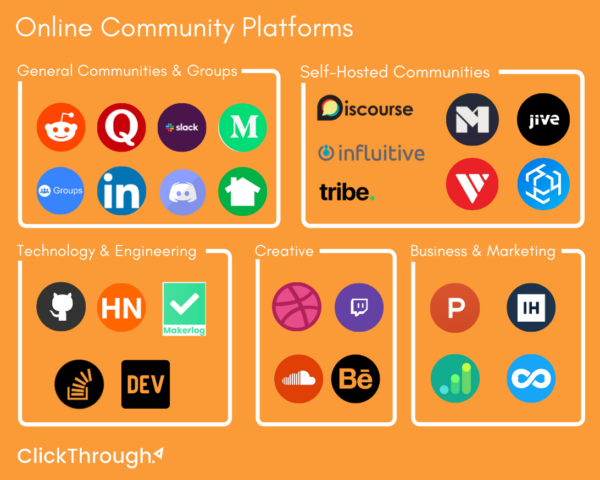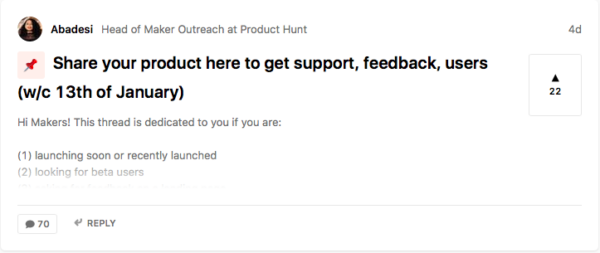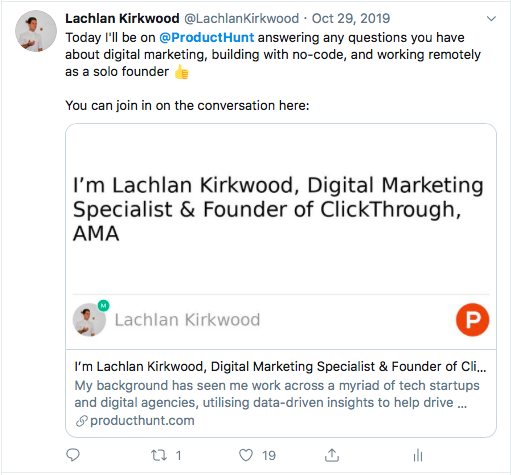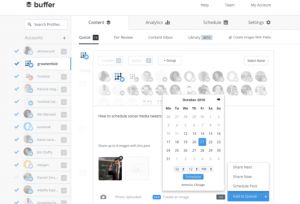As user behaviors transform towards more private and meaningful conversations, engagement rates across branded profiles have started to shift.
An engaging social media strategy is no longer reliant on simply publishing content in the open. Users now seek more authentic interactions across their own network and the brands they purchase from. This shift towards closed conversations provides brands the opportunity to create more personalized experiences.
Groups and communities have become ubiquitous as users reinvent the way they use social media. The dormant behavior of sharing information and updates has declined in favor of sharing content within a closed environment of like-minded peers.
These communities provide a space where members can host authentic conversations and build meaningful relationships within a private environment.
As the demand for communities has grown, there’s no shortage of platforms that aim to facilitate community interactions across any vertical. From Reddit, to Quora, Facebook groups, and LinkedIn – there’s a niche community to service any need.

Top online community platforms aggregated by ClickThrough.
But as a brand, how can you leverage communities within your own social media strategy and drive more engagement from your audience?
By prioritizing communities, your brand can become a central part of the important discussions hosted by your audience.
This article will share actionable strategies on how to build or leverage communities within your social media stack. Whether it be uncovering existing opportunities, understanding how to build your own, or driving the most engagement from each channel – I’ll share some practical advice to get you started.
Getting Started
It’s important to first start by researching where exactly your audience comes together as a collective. Similar to your existing social media strategy, you’ll need to understand what platforms your audience uses throughout their day-to-day lives.
If you’re a B2B brand, you’ll more than likely prioritize LinkedIn, and if you’re in the B2C space, Facebook might be your go-to. By dedicating some research time, you can analyze what current LinkedIn or Facebook groups are already in existence, as well as what content they share.
If there isn’t an existing group that services your specific niche, you could consider creating one to support both your audience and brand. By creating your own group, you’ll have the opportunity to foster a community and help moderate healthy conversations.
Sharing Value
When you begin developing a content strategy for a community – whether it be a group you moderate or one that you’re a member within – it’s important to prioritize consistently sharing value.
Like any content you create for social media, it should serve a specific purpose. Whether it be to educate users, provide entertainment, or even solve a problem, this content should serve the purpose of adding tangible value to those who consume it.
Communities are often built to service niche interests. They provide a unique platform for brands to interact and relate with users.
Content Strategies
Once you’ve built or joined a community, what’s the best way to develop and execute an engaging social strategy?
- Ask Questions
When you’re getting started, a simple, yet effective way to start driving engagement is through asking questions.
By publishing questions within forums, it allows members to engage with your brand and share their unique perspectives. This showcases that your brand has a genuine interest about the topics it discusses.
Unlike creating longer-form content, questions can be a time-efficient way to experiment with a building initial engagement.
2. Be Conversational
The benefit to communities is that they’re designed to be a truly social experience. As members are encouraged to engage in conversation, they go beyond publishing outbound content.
It’s important for your brand to actively contribute to community discussions and become conversational.
This doesn’t mean that your brand should comment on every community post. You should instead take the time to leave thoughtful comments that add value to relevant posts.
This strategy can help better reinforce your brand values and improve its relatability. By creating a space where members are comfortable to also contribute their own questions, it can help drive posts and reduce the time required to publish your own branded content.
3. Contribute Unique Insights
As a brand within a community, there may be instances where you have access to certain resources that members can find insightful or valuable. This could be relevant research or industry news that affects your audience
By taking the time to share this content in a community, it not only adds tangible value to your audience, but also helps reinforce your position as a thought leader within the industry.
4. Hosting Competitions
Like all social platforms, communities are a fun channel to experiment with different forms of social content.
By hosting competitions inside your community, you can not only drive engagement with internal members, but also encourage them to invite other like-minded people from their own network. This is an effective way to source relevant and trustworthy members from reliable sources.
Note: At the end of the competition, you should take the time to welcome any new members and inform them about the community values.
5. Branded Posts
As your brand allocates resources to build, grow, and moderate a community, there evidently needs to be a strategy in place to gain value back from this channel.
After building a highly-engaged audience around a particular niche, your brand can offer relevant content, products, or services for members.
Promoting branded content within a community follows a different process to what your brand might publish as organic social posts.
Any promotional content should generally be shared as long-form posts, taking the time to explain the particular problem it solves that’s relatable to members. The format of these posts should be personal and even highlight why your brand is passionate about creating a unique solution.
At the end of each post, your brand should encourage users to offer their thoughts and feedback to remain inclusive throughout the process.
Leading Communities
It’s becoming more common than ever for brands to build communities around their products or services. Product Hunt is a perfect example of a brand paving the way for those looking to build a highly-engaged community.
At its core, Product Hunt is a place to discover new products as soon as they’re publicly launched. What makes the platform so successful, however, is the community it’s built upon.
Product Hunt has developed its own first-party community where members often become evangelists who actively promote the brand across their network.
Members of the Product Hunt community are incentivized to visit each day and actively make a contribution. So what is it that makes this community so engaging?
- Leading By Example
A driving factor behind the growth of Product Hunt’s community is the brands ability to actively lead by example. The social media & community team consistently contribute and take part in community discussions – showcasing the brand as authentic and relatable.
2. Incentivizing Community Behaviors
To incentivize engagement across the community, Product Hunt has built a community leaderboard that celebrates the most engaged members of the community each week. As this board is updated every 7 days, it gives every member an equal opportunity to be recognized for their contributions.
Pro tip: Facebook groups also allow you to reward members with badges based on their engagement. Visit the settings tab of your Facebook group to customize the available options.
3. Provoking Meaningful Conversations
The platform also takes the time each day to hosts daily discussion topics where members are welcomed to contribute. These topics cover relevant questions to their target audience, or ask for members to provide suggestions of their own.

By publishing a new discussion topic each day, it incentivizes members to continually return to the platform and remain up to date.
4. Leveraging External Platforms
Although Product Hunt is a community platform itself, it also leverages external channels to promote its presence. The brand is renowned for actively republishing the top community posts across their Twitter account.
By repurposing this content, it provides the opportunity to distribute content beyond the walls of its own community. This can help the platform reach new users who are not yet a member of their audience.
The platform also encourages members to republish their own content from the community. This user-generated content helps promote the brand to new audiences.

Communities offer a valuable opportunity for brands looking to grow and continually interact with a highly-engage audience.
The barrier to entry continually decreases as dedicated tools and platforms streamline the process of getting started.
If you’re a brand that’s eager to start building a community on a third-party platform like Facebook, it’s important to understand the potential ramifications of using an external provider.
Although these platforms can simplify the process of building a community, there are also downsides to consider. Similar to organic social channels, the performance of your content can become subject to changes in rules and regulations over time.
By taking the time to build and host your own community, however, you can truly own the discussions, rules, and data throughout the whole experience.
Platforms like Mighty Networks or a simple email list allow brands to own the end-to-end community experience.
Whether you’re a B2C or B2B brand, communities are strategy that will continually become more important as users seek more authentic interactions with all brands.
Digital & Social Articles on Business 2 Community
(68)





